
Roots
Consider for a moment the profound intimacy we share with our hair, particularly textured strands. It is more than mere adornment; it serves as a chronicle of our heritage, a living testament to journeys traversed, and a canvas for self-expression. When chemical treatments enter this personal landscape, seeking to reshape or recolor, they leave an indelible mark, often altering the very structure that dictates how our hair interacts with the world, especially with water.
The quiet concern that settles in when strands feel parched, when they resist softening, speaks to a deeper question ❉ can hair, once altered by these potent agents, truly reclaim its innate capacity to drink in and hold onto life-giving moisture? This inquiry beckons us to delve into the very foundations of hair, to understand its delicate architecture before we can chart a path toward its restoration.
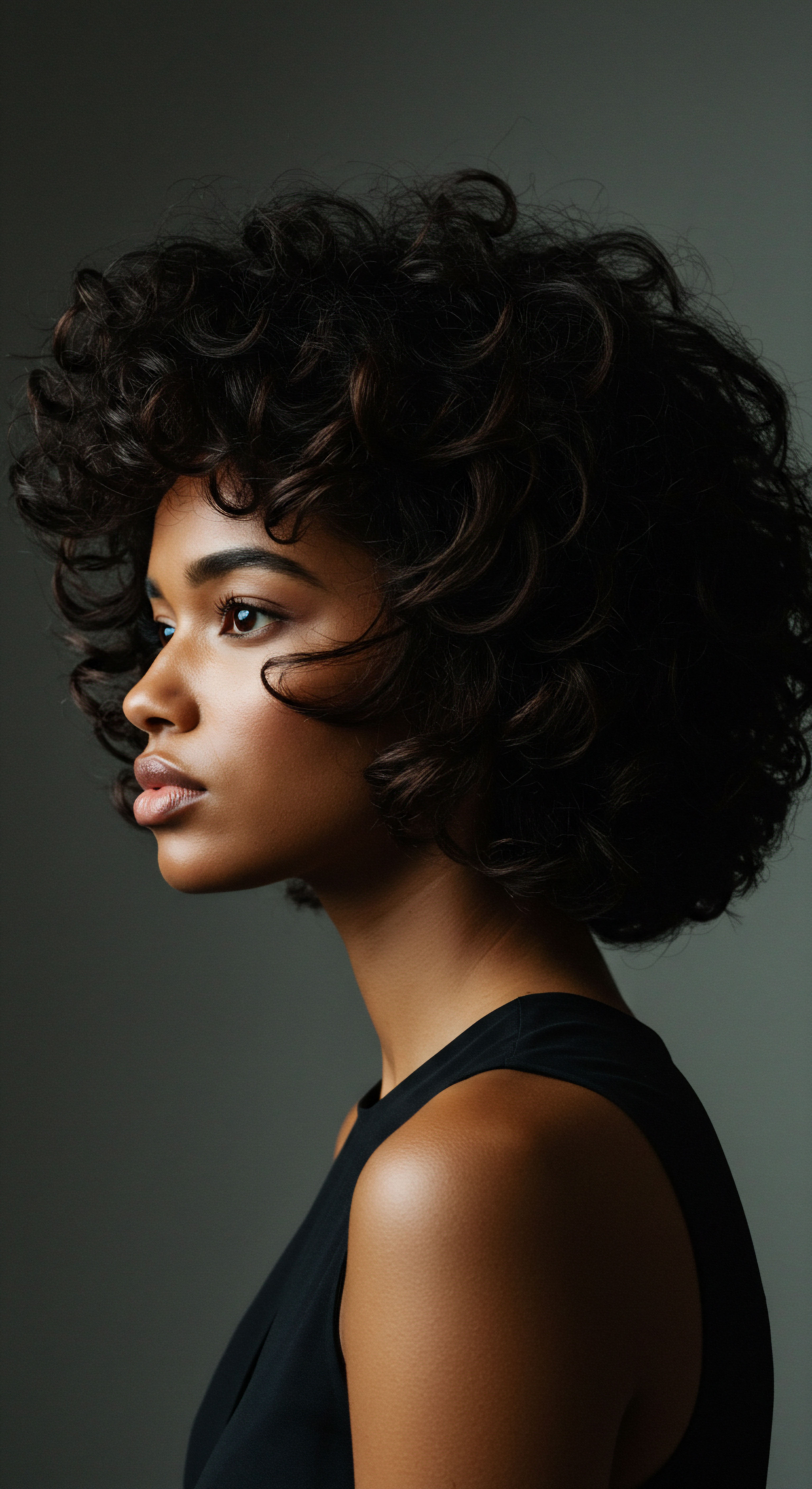
The Hair Strand Unveiled
Each individual hair strand, seemingly simple, is a marvel of biological engineering. At its heart lies the Cortex, a central core composed of keratin proteins, twisted and bound together by a network of bonds, including disulfide bonds, which grant hair its strength and elasticity. This cortex is also the repository for melanin, determining our hair’s color. Encasing this inner strength is the Cuticle, a protective outer layer made of overlapping, scale-like cells.
Think of these cuticle cells as tiny shingles on a roof, meant to lie flat and smooth, creating a resilient barrier that shields the inner cortex from external aggressors and helps regulate moisture exchange. A healthy, intact cuticle is key to optimal moisture absorption and retention.
The outermost layer of the hair shaft is the cuticle. This layer, comprised of approximately six to ten layers of flattened, overlapping cells, protects the hair’s internal structure. These cells typically lie flat, forming a smooth, protective surface. Beneath the cuticle resides the cortex, which makes up the bulk of the hair’s mass, roughly 90% of its total weight.
This section is primarily responsible for the hair’s mechanical properties, including its strength and elasticity. The cortex stores moisture and contains the pigments that give hair its color.
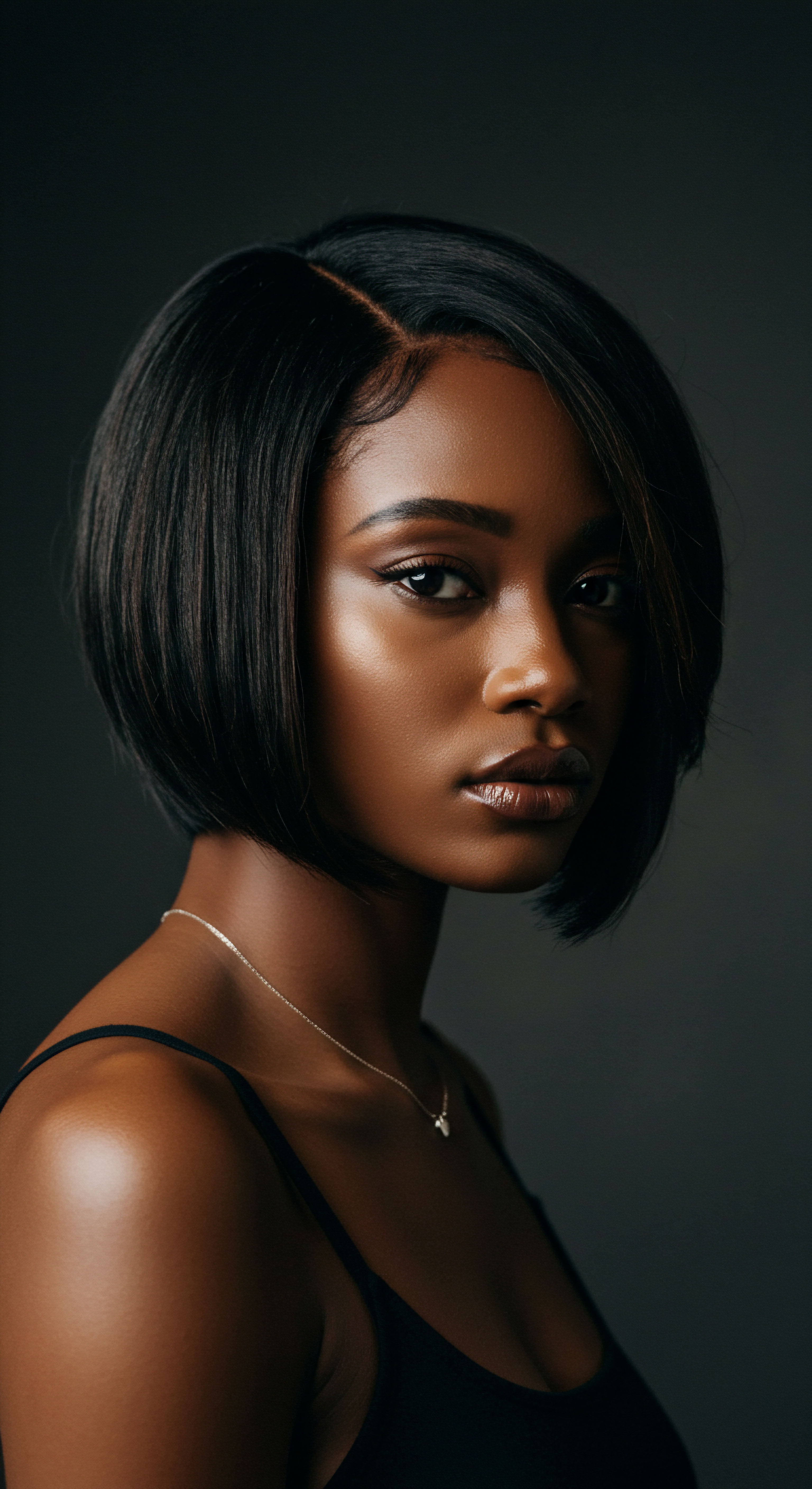
The Language of Hair Structure
To truly comprehend the conversation between hair and water, a precise lexicon becomes helpful.
- Keratin ❉ The primary protein building block of hair, responsible for its structural integrity.
- Disulfide Bonds ❉ Strong covalent bonds within the keratin structure that contribute significantly to hair’s shape and strength. Chemical treatments directly target these bonds.
- Cuticle Cells ❉ The overlapping, scale-like cells forming the outermost protective layer of the hair shaft.
- Porosity ❉ The hair’s capacity to absorb and retain moisture, directly influenced by the state of its cuticle. Hair with a compromised cuticle tends to exhibit higher porosity.

Hair Growth Cycles and Their Influence
Understanding hair’s journey from root to tip provides another layer of insight. Hair growth follows a cyclical pattern, continuously renewing itself. The hair shaft itself is a non-living structure, meaning once it emerges from the scalp, it cannot heal itself in the way skin does.
Damage incurred from chemical treatments accumulates along the length of the strand. This biological reality underscores the importance of preventative measures and careful post-treatment care, as new growth emerges healthy, while the existing treated length carries the history of its chemical encounters.
Hair, a profound biological structure, tells a story of both its inherent resilience and the marks left by our choices.

What Happens When Chemical Treatments Alter Hair?
Chemical treatments, whether coloring, perming, or relaxing, work by intentionally altering the hair’s fundamental structure. Bleaching, for instance, requires raising the cuticle to permit the bleaching agent to penetrate and strip away natural pigment. This process, while transformative for appearance, can permanently lift the cuticle scales, creating gaps that leave the inner cortex exposed. Relaxers and perms similarly disrupt the disulfide bonds within the cortex, changing the hair’s natural shape.
The consequences of these alterations are tangible. Hair becomes more porous, meaning it can absorb water more readily, yet paradoxically, it struggles to hold onto that moisture. This leads to the familiar signs of chemical damage ❉ dryness, brittleness, a rough texture, and increased susceptibility to breakage. The delicate balance of proteins and lipids that once maintained the hair’s strength and moisture resistance is disrupted, leaving strands vulnerable.

Ritual
Moving from the foundational understanding of hair’s inner workings, we arrive at the practical wisdom that shapes our daily interactions with our strands. The journey of restoring moisture absorption capabilities to chemically treated hair is not a singular event, but a deliberate sequence of practices, a ritual of care that speaks to both science and gentle intention. It requires a shift in perspective, moving beyond quick fixes to a sustained commitment to nurturing. How then, do we guide our hands and our choices to invite healing and re-establish a harmonious relationship with moisture?

Rebuilding the Hair’s Protective Barrier
When chemical treatments compromise the hair’s outer cuticle, the first step in restoration involves mimicking its protective function. This is where products designed to smooth and seal the cuticle become vital. These often contain ingredients that deposit onto the hair’s surface, creating a temporary barrier.
Consider the diligent application of deep conditioning masks and restorative treatments. These are not merely indulgences; they are crucial steps in a recovery regimen. Ingredients like hydrolyzed proteins, amino acids, and lipids work to replenish what has been lost.
Hydrolyzed proteins, for example, are small enough to penetrate the hair shaft, filling microscopic gaps in the cortex and helping to fortify the hair’s internal structure. Lipids, such as ceramides, restore the hair’s outer protective barrier, acting as a kind of “glue” to hold the cuticle together and improve moisture retention.

Do Hydrating Shampoos Truly Help Damaged Hair?
The choice of cleanser sets the tone for the entire care ritual. For chemically treated hair, a gentle approach is paramount. Shampoos that are free of harsh sulfates, often responsible for stripping natural oils, become preferred. Instead, look for formulations that incorporate humectants, like glycerin or hyaluronic acid.
These ingredients possess a unique ability to attract water molecules from the environment and draw them into the hair shaft, helping to retain moisture. While they do not repair structural damage, they certainly contribute to a more hydrated feel, laying the groundwork for other treatments to perform optimally.
The objective with shampooing chemically treated hair is to cleanse without further stripping. The hair is already vulnerable, its natural lipid barrier compromised. A mild, moisturizing shampoo respects this delicate state, ensuring that the hair is not further dehydrated during the cleansing process. This gentle cleansing preserves any natural oils that remain and prepares the hair to receive the conditioning treatments that follow.
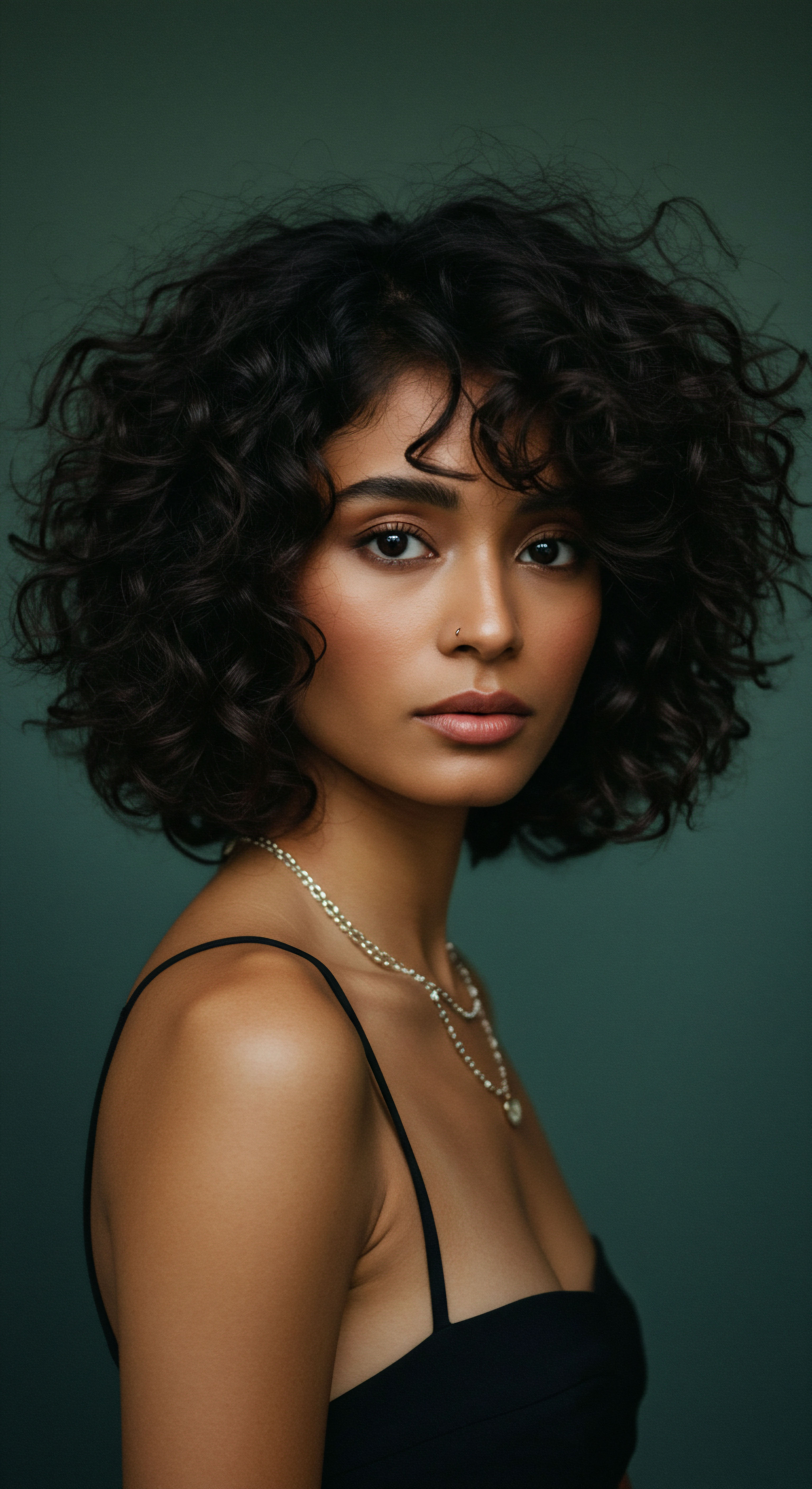
Strategic Conditioning and Sealing
Conditioning is perhaps the most immediate and impactful ritual for damaged hair. After cleansing, the hair’s cuticle may still be open, eager to absorb, but equally prone to losing moisture.
- Deep Conditioners ❉ Applied weekly or bi-weekly, these treatments provide an intense dose of moisture and reparative ingredients. They work by coating the hair shaft, smoothing the cuticle, and delivering beneficial compounds that can temporarily improve elasticity and softness.
- Leave-In Treatments ❉ Lightweight leave-in conditioners offer continuous protection and hydration throughout the day. They form an additional layer of defense against environmental stressors and styling friction, while also delivering moisture and sometimes protein to fortify the hair.
- Sealing Oils ❉ For highly porous hair, applying a light oil after moisturizing can help to “seal” in the hydration. Oils do not provide moisture themselves, but they create a protective layer that slows down the rate at which water evaporates from the hair shaft. Coconut oil, for instance, has been shown to support hair moisture retention by reducing water sorption.

Table ❉ Key Ingredients for Moisture Restoration
| Ingredient Type Proteins |
| Mechanism of Action Replenish lost protein, fill gaps in cortex, strengthen hair structure. |
| Examples Hydrolyzed Keratin, Hydrolyzed Wheat Protein, Hydrolyzed Quinoa Protein |
| Ingredient Type Humectants |
| Mechanism of Action Attract and draw moisture from the air into the hair shaft. |
| Examples Glycerin, Hyaluronic Acid, Panthenol |
| Ingredient Type Lipids and Ceramides |
| Mechanism of Action Restore outer protective barrier, smooth cuticle, improve moisture retention. |
| Examples Ceramides, Phytoceramides, Jojoba Oil, Argan Oil |
| Ingredient Type Bond-Building Compounds |
| Mechanism of Action Help reconnect broken disulfide bonds within the hair's internal structure. |
| Examples Bis-Aminopropyl Diglycol Dimaleate, Citric Acid |
| Ingredient Type These ingredient categories work in concert to address various aspects of chemical damage and support moisture balance. |
A consistent regimen, rooted in gentle cleansing and targeted conditioning, acts as a gentle invitation for damaged hair to reconnect with vital hydration.
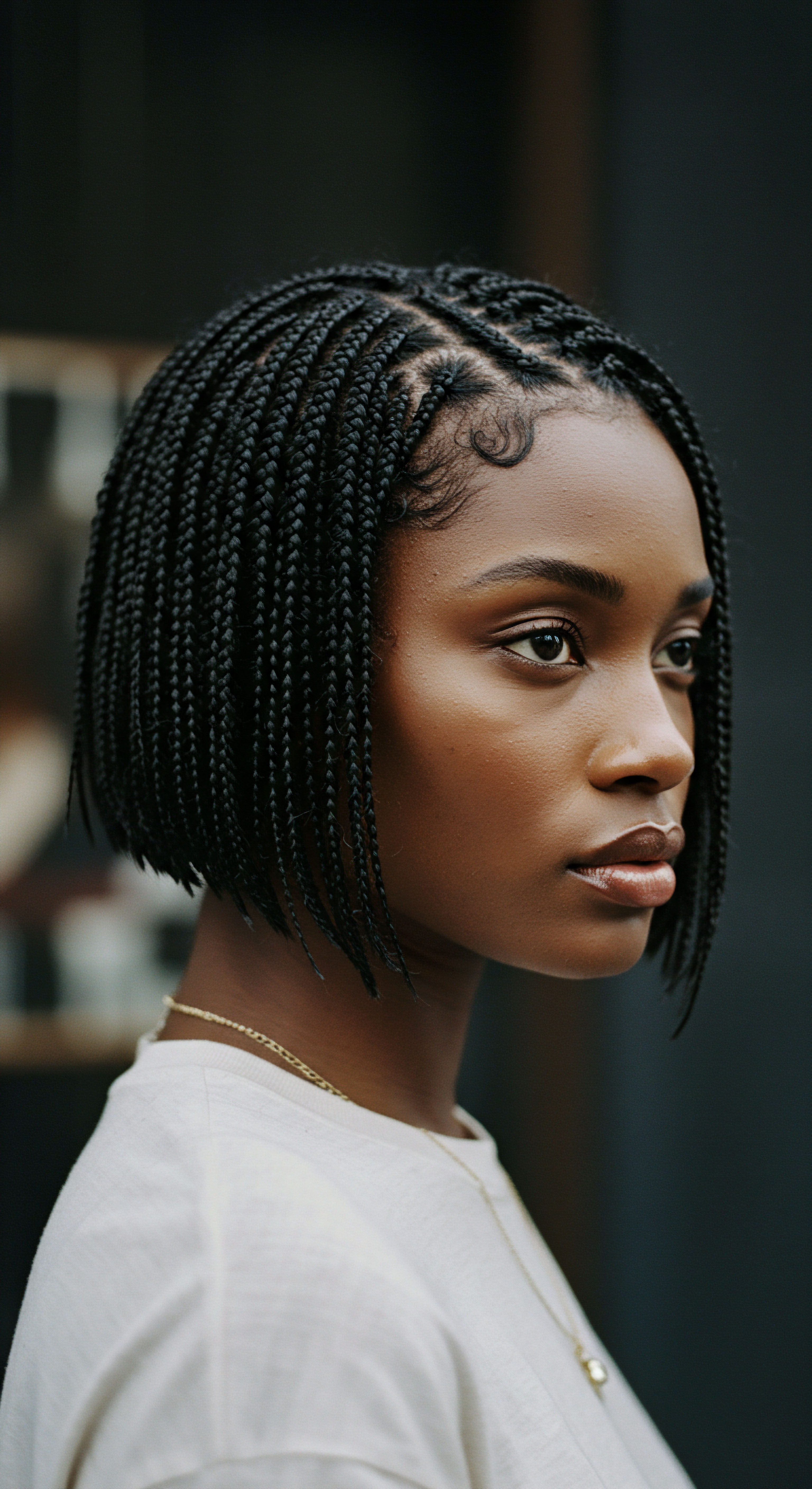
Relay
The conversation around chemically damaged hair often halts at the point of perceived irreversible harm, leaving a sense of finality. Yet, to truly understand if damaged hair can regain its optimal moisture absorption capabilities, we must move beyond surface-level pronouncements and step into a more intricate dialogue, one where science, cultural understanding, and the very nature of resilience converge. This requires us to question prevailing assumptions and to consider the nuanced ways hair responds to distress and diligent care.
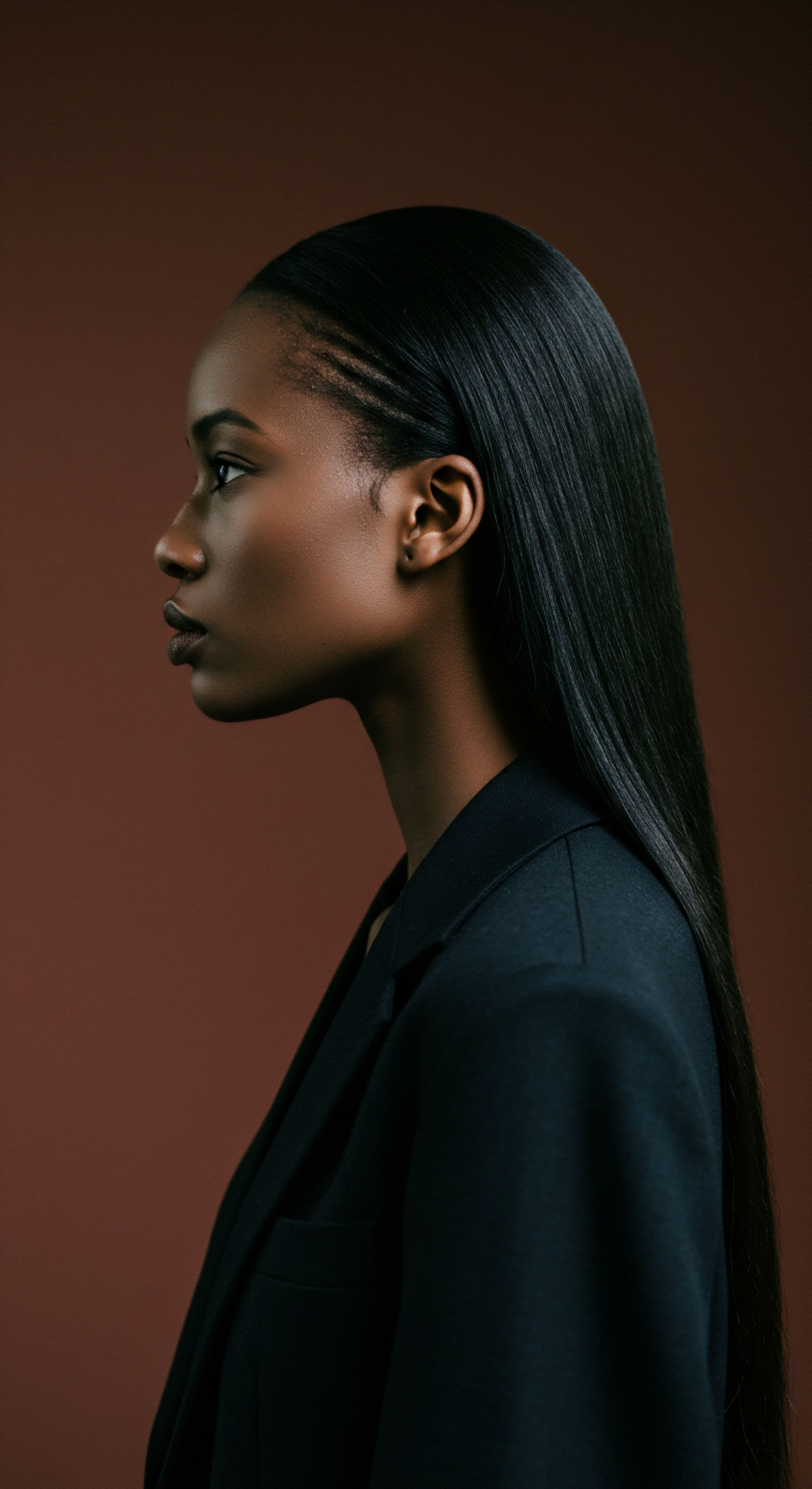
Does Chemically Damaged Hair Absorb More Water Than Healthy Hair?
Here, a surprising, almost counter-intuitive, piece of research sheds light on the complex reality of moisture interaction. While the common perception is that damaged hair is simply “dry” and repels water, studies suggest a different story regarding initial absorption. For instance, a study by Wolfram indicated a notable increase in moisture regain in chemically treated hair ❉ a 38% rise in bleached hair and a 59% rise after a relaxing treatment, compared to untreated hair.
This phenomenon is explained by the structural changes induced by the chemical processes. When the cuticle is compromised, becoming more porous and lifted, water molecules can more easily penetrate the hair shaft.
The challenge, then, is not always about absorbing water, but about retaining it. Highly porous hair, while quickly taking in moisture, also loses it with equal rapidity. This leads to a cycle of swift hydration followed by equally swift dehydration, resulting in hair that feels perpetually dry and prone to frizz. This insight shifts our focus from merely “getting water in” to “keeping water in” and highlights the ongoing battle against moisture loss.
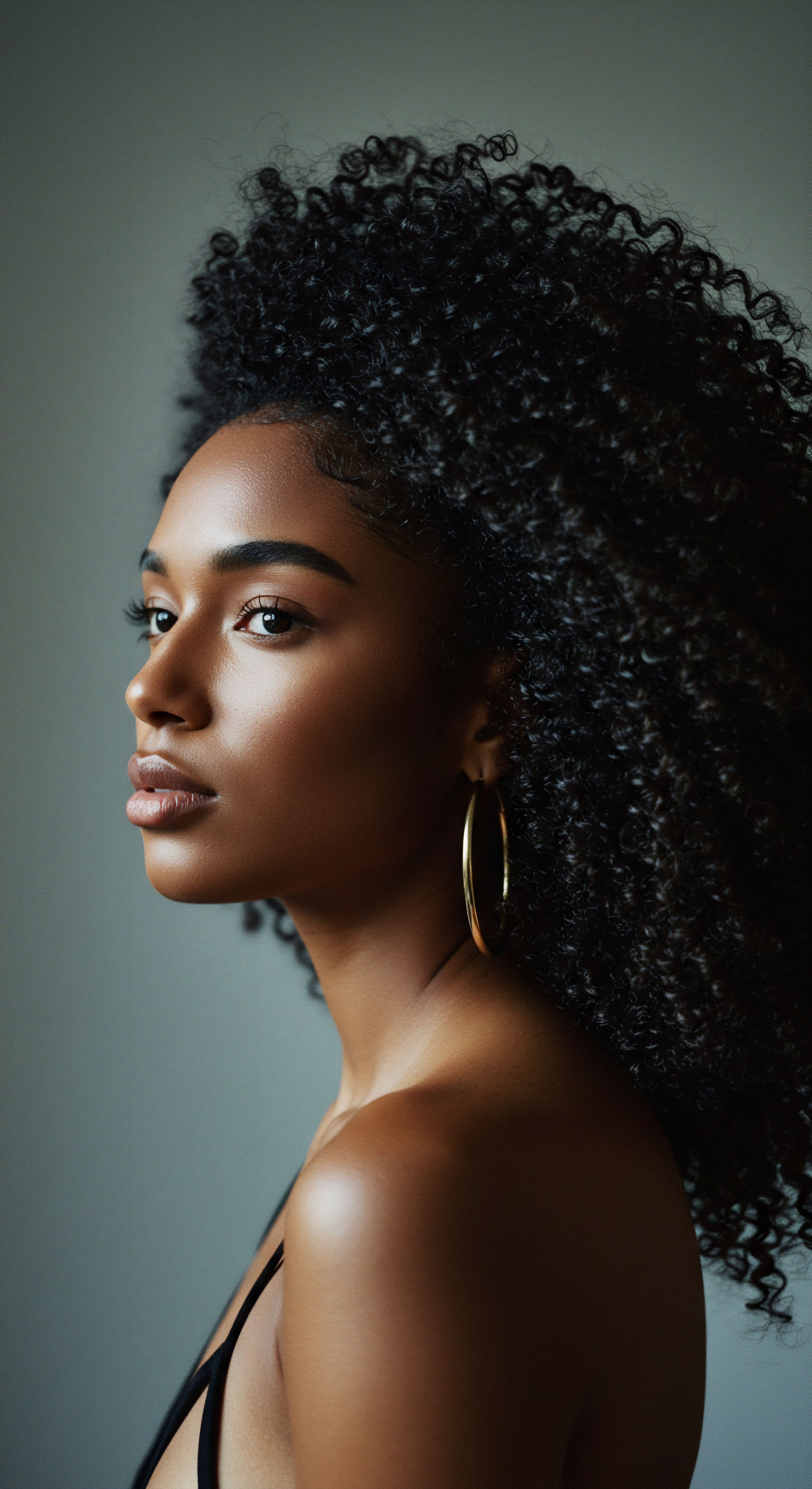
The Intricacies of Hair Porosity After Chemical Stress
Porosity, the hair’s ability to absorb and retain water, is fundamentally altered by chemical treatments. The aggressive nature of bleaching agents, relaxers, and permanent dyes forces the cuticle scales open to allow chemicals to penetrate the cortex. This can lead to the permanent lifting, chipping, or even loss of cuticle cells, creating an uneven and highly permeable surface.
This increased permeability, while allowing water to rush in, simultaneously compromises the hair’s natural defense against moisture loss. The hair shaft, with its now exposed cortical structures, becomes more vulnerable to environmental factors and further damage. This is why highly porous hair often feels dry, appears dull, and is prone to tangling and breakage.
Consider the research presented by J.M. Sanad and colleagues, which, while examining the effects of acidic straighteners, observed reduced resistance to hair breakage and diminished water uptake and retention in treated hair, alongside increased cuticle irregularity. However, another observation within their review of studies noted instances of increased softness and shine macroscopically, with some histopathological findings of reduced cuticle damage after specific keratin straightener applications, though no cuticle repair was observed on electron microscopy. This complex picture underscores that while certain cosmetic improvements might be visible, true structural repair of the cuticle to its pristine, pre-damaged state remains a profound challenge.
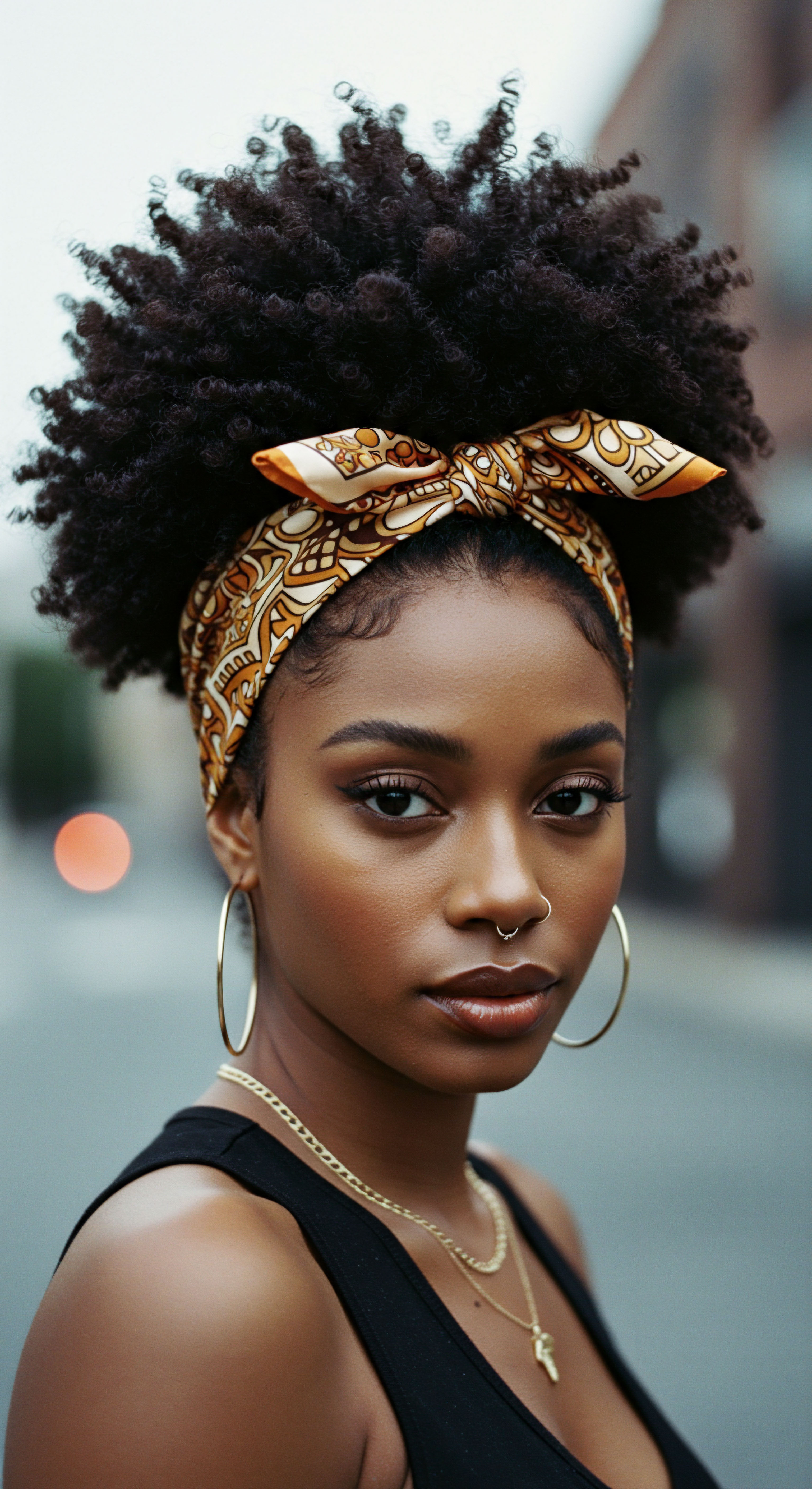
Can Bond-Building Technologies Restore Internal Hair Integrity?
The scientific community has made strides in addressing internal damage through bond-building technologies. These innovations aim to reconnect the broken disulfide bonds within the hair’s cortex, which are severely disrupted by chemical processes. Products containing ingredients like bis-aminopropyl diglycol dimaleate work at a molecular level to repair these critical internal structures.
While these technologies do not magically revert hair to its virgin state, they significantly improve its internal strength, elasticity, and overall resilience. By fortifying the inner framework, they indirectly contribute to better moisture retention, as a stronger hair shaft is less prone to further damage and better equipped to manage its interaction with water. This represents a substantial leap beyond traditional conditioning, which primarily focuses on external cuticle repair.
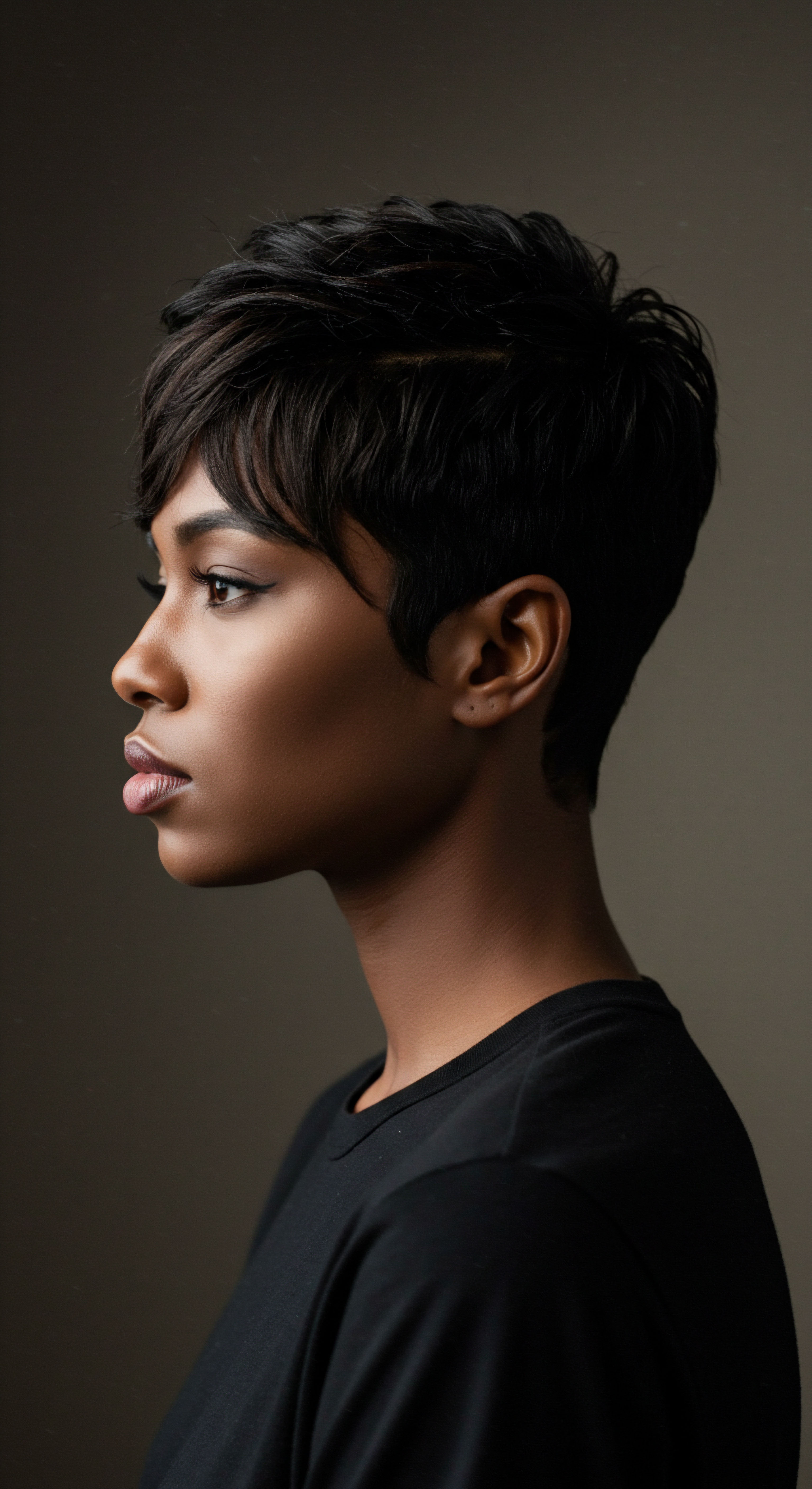
Table ❉ Hair Damage Severity and Recovery Potential
| Damage Level Mild (e.g. single semi-permanent color) |
| Primary Characteristics Slightly raised cuticles, minor protein loss. |
| Moisture Absorption State Slightly increased porosity, generally manageable. |
| Recovery Potential for Optimal Absorption High, with consistent moisturizing and protective care. |
| Damage Level Moderate (e.g. repeated coloring, light bleaching) |
| Primary Characteristics Noticeably lifted cuticles, some protein and lipid depletion. |
| Moisture Absorption State Increased porosity, rapid moisture absorption and loss. |
| Recovery Potential for Optimal Absorption Moderate, requiring targeted protein and lipid treatments, bond-builders. |
| Damage Level Severe (e.g. aggressive bleaching, strong relaxers) |
| Primary Characteristics Significant cuticle damage, exposed cortex, extensive bond breakage. |
| Moisture Absorption State Very high porosity, struggles to retain any moisture, feels brittle. |
| Recovery Potential for Optimal Absorption Limited for original state, but significant improvement possible with intensive bond-building, deep conditioning, and protective styling. New growth will be healthy. |
| Damage Level While complete reversal to virgin hair is not possible, strategic interventions can dramatically improve moisture handling. |
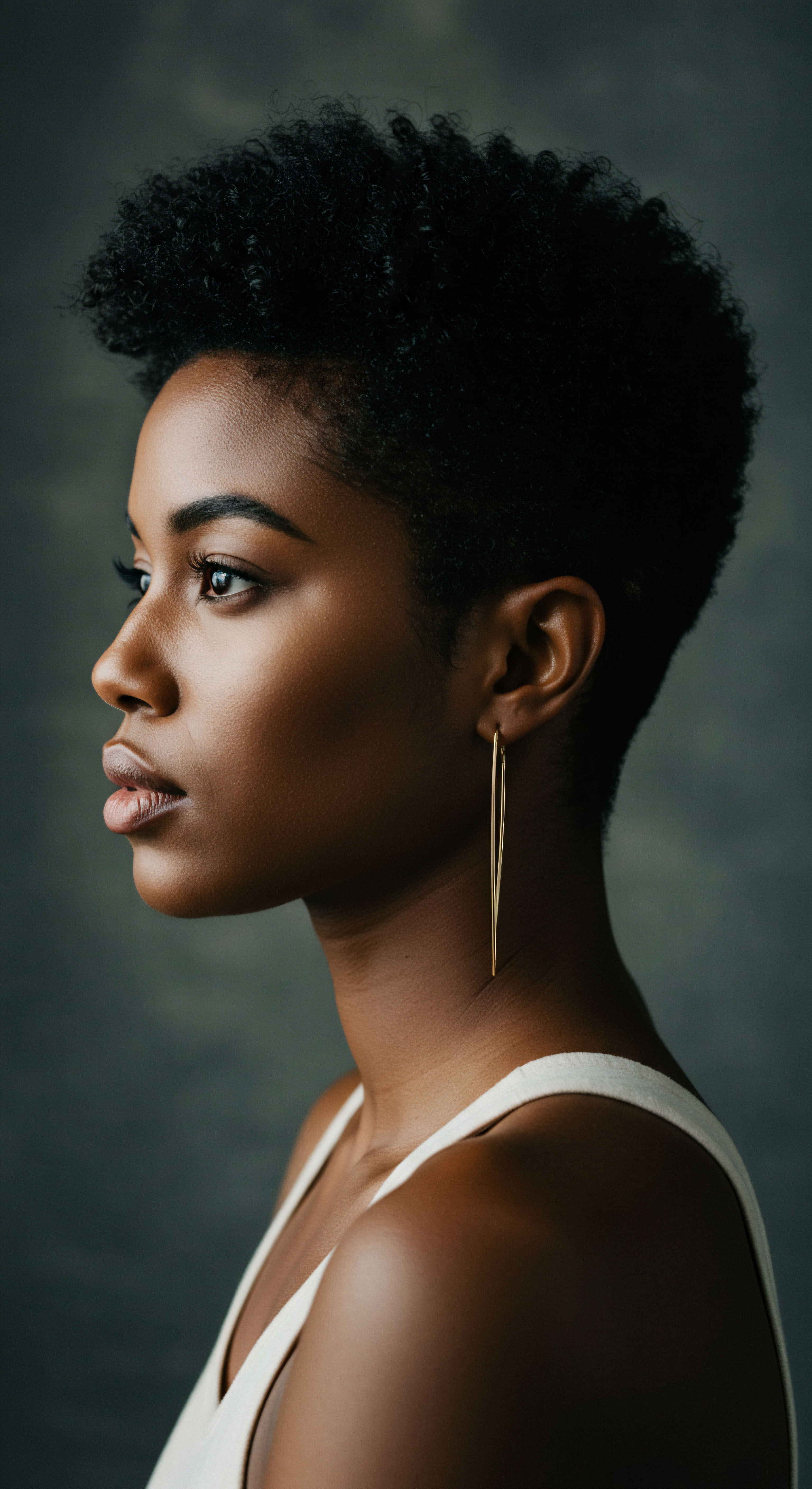
The Role of Cultural Context in Hair Resilience
Beyond the microscopic, a broader cultural lens reveals another dimension of hair resilience. Textured hair, particularly that of African descent, possesses unique structural characteristics, such as a helical shape and a flattened elliptical cross section, which can make it more prone to mechanical damage but also, surprisingly, show resistance to certain chemical stresses. One study comparing Asian, White European, and African hair after chemical stress found that African hair emerged as the most resistant to stress when straightening was combined with a commercial dye.
This resilience is not an invitation for aggressive chemical use, but rather a testament to the inherent strength and adaptability of diverse hair types. It also underscores the importance of cultural hair care practices, passed down through generations, which often prioritize moisture, protection, and gentle handling. The journey of embracing natural texture, for many, is a powerful act of reclaiming agency and nurturing hair back to its inherent vitality, allowing it to dictate its own rhythm of moisture absorption and release. This connection to ancestral knowledge, combined with scientific understanding, forms a powerful pathway toward holistic hair wellness.

Reflection
The question of whether chemically damaged hair can truly regain its optimal moisture absorption capabilities invites us into a layered contemplation, one that extends beyond simple yes or no. While the non-living nature of the hair shaft means that true, cellular-level healing is not possible in the way living tissue regenerates, the story does not end there. Our exploration reveals that hair, even when structurally altered, possesses a remarkable capacity for improvement and a nuanced interaction with moisture.
It may absorb water differently, perhaps even more readily in its compromised state, yet the true victory lies in cultivating an environment where it can hold onto that hydration, where its inherent resilience is supported, and where it is treated with a knowing hand. The path to serene strands, then, is a continuous act of gentle understanding, a celebration of what is possible, and a patient commitment to nourishing the hair we have, honoring its past, and tending to its future.
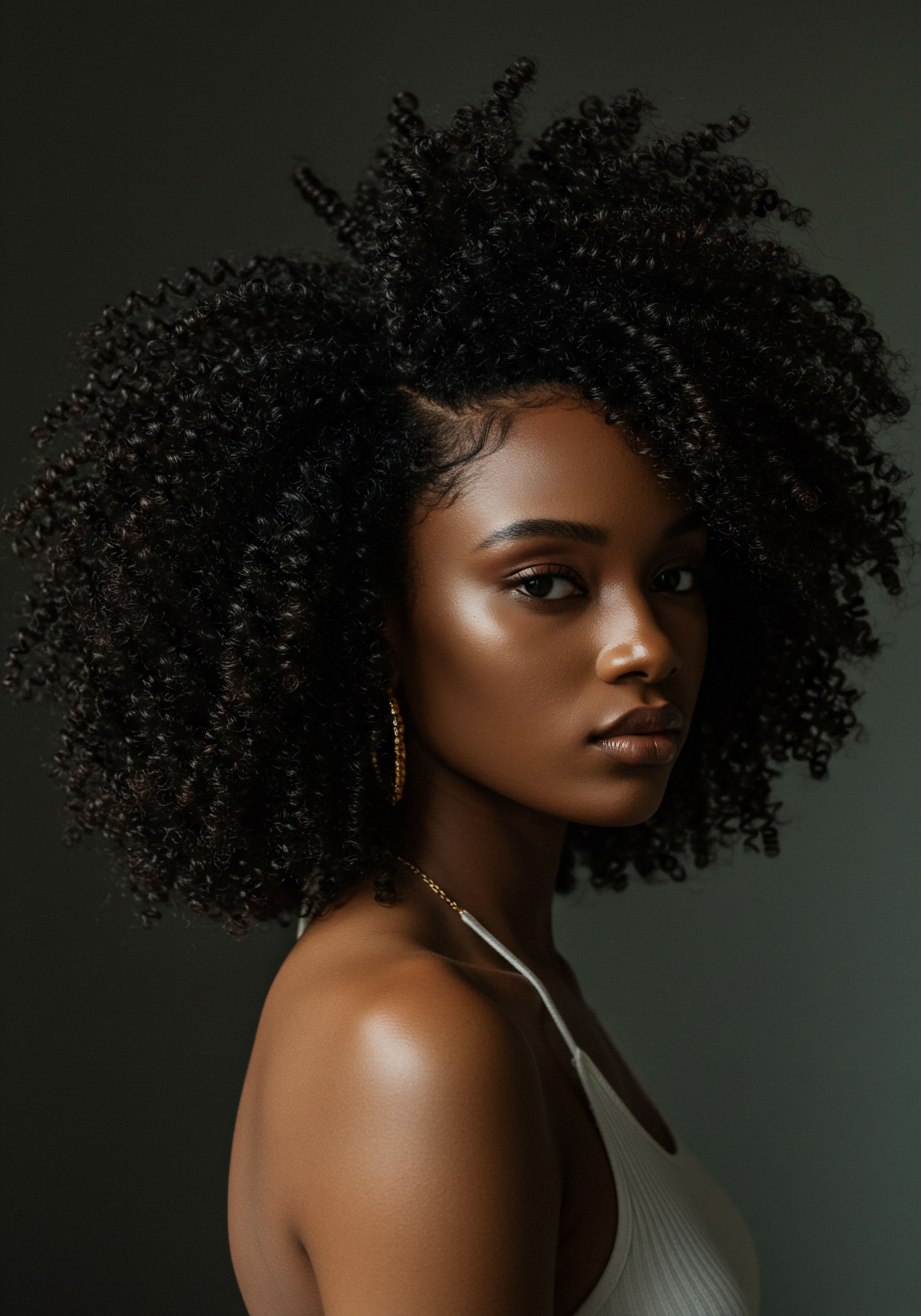
References
- Chase, Dominic. “Evaluating the Long-term Outcomes of Chemical Hair Treatments on Hair Structure and Scalp Health.” J Cosmo Tricho, Volume 10:05, 2024.
- Bhushan, B. “Morphological properties of hair and their variation when subjected to oxidation via chemical bleaching.” University of Cambridge, 2013.
- Cruz, C. F. & Gomes, A. C. “On Hair Care Physicochemistry ❉ From Structure and Degradation to Novel Biobased Conditioning Agents.” Cosmetics, 7(2), 30, 2023.
- Stylist, P. “Post-Chemical Treatment Care ❉ Best Practices for Maintaining Hair Health.” Hairdressing Journal, 2024.
- Velez, D. “What Is Bond-Building Organic Haircare? Can Organic Work Too?” Learn Canyon, 2025.
- Haircare, H. “The Complete Guide to All 6 Types of Hair Repair Products.” Makeup Artist in Paris, 2024.
- Dias, M. F. R. “An Overview on Hair Porosity.” NYSCC, 2020.
- Haircare, H. “The Science of Hair Repair.” Halo Haircare Society, 2025.
- Texture, H. “The Science Behind Hair Repair ❉ How Our Protein Bond Reconstructor Works.” Hello Texture, 2024.
- de Paula, J. N. H. Basílio, F. M. A. & Mulinari-Brenner, F. A. “Effects of chemical straighteners on the hair shaft and scalp.” Anais Brasileiros de Dermatologia, 97(2), 193-203, 2022.
- Parlor, M. M. “The Essential Guide to Caring for Fine Hair After Chemical Treatments.” Makers Make Parlor, 2024.
- Brazil-Prof. “Hair resuscitation ❉ emergency measures for damaged hair.” BRAZIL-PROF hair cosmetics, 2023.
- Biolabs, O. “How to Improve Hair Porosity ❉ The Essential Guide.” Oxford Biolabs, 2018.
- FullyVital. “From Heat Styling To Chemical Treatments ❉ Understanding The Different Types Of Hair Damage.” FullyVital, 2023.
- McMullen, R. L. & Jachowicz, J. “True porosity measurement of hair ❉ A new way to study hair damage mechanisms.” Cosmetics & Toiletries, 2005.
- Kim, S. K. Lee, Y. S. & Kim, Y. C. “Comparison of hair shaft damage after chemical treatment in Asian, White European, and African hair.” International Journal of Dermatology, 53(2), 208-212, 2014.
- Fernandes, D. & Leonardi, G. R. “Porosity and Resistance of Textured Hair ❉ Assessing Chemical and Physical Damage Under Consumer-Relevant Conditions.” MDPI, 2024.
- Shin, S. M. Kim, S. Y. & Lee, Y. S. “Effects of excessive bleaching on hair ❉ comparative analysis of external morphology and internal microstructure.” Journal of Cosmetic Science, 70(6), 333-345, 2024.
- Thompson, C. “The natural hair transformation ❉ a journey of resilience and resistance.” Smith Scholarworks, 2002.
- Kingsley, P. “Bleaching Hair ❉ How it Works & Preventing Damage.” Philip Kingsley, 2022.
- Wow, C. “The Science Behind Bleach Damaged Hair & How to Fix It.” Color Wow, 2023.
- Unilever. “Transformational technologies shaping the market for hair repair.” Unilever, 2024.
- Yu, X. & Li, C. “Mechanisms of impairment in hair and scalp induced by hair dyeing and perming and potential interventions.” Frontiers in Pharmacology, 14, 1197943, 2023.